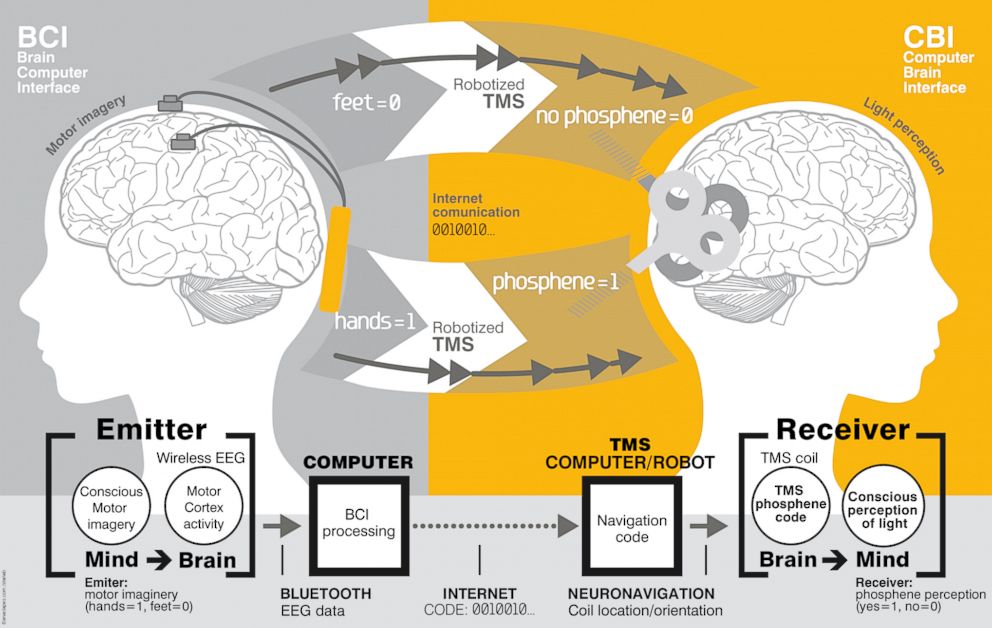Scientists Transmit Thoughts from one Brain to Another

An international team of scientists has succeeded in transmitting the thoughts of one individual into the brain of a second person, located thousands of miles away, combining some of the latest technological marvels with the long arm of the Internet.
This is thought to be the first time that two brains have communicated with each other directly over a long distance without the sender having to utter a single word.
Two greetings -- "hola" and "ciao" -- made the historic trip from India to France, where they were received and spoken by a researcher who was blindfolded and equipped with earplugs. The scientists wanted to ensure that the receiver knew what his colleague 5,000 miles away was thinking because of the brain-to-brain transmission, not because of some other cue.
The research, published in PLOS One, was conducted by scientists in Spain, India, France and the United States.
The scientists wanted to prove, even with technology that will likely seem arcane in the near future, that it's possible for two human brains to communicate with each other directly, Alvaro Pascual-Leone of Beth Israel Deaconess Medical Center and Harvard Medical School, co-author of the study, said in a telephone interview.
Brain to brain transmission is a hot topic among scientists around the world, and last year researchers at the University of Washington claimed to be the first to carry it off when a student on one side of the campus moved a finger while a colleague thought about the command on the other side of the campus.
The Harvard team took that one step further with the first transmission of specific words.
But the breakthroughs also include a warning. This should be very valuable for medical applications, especially for patients with communication problems, but it could also be a source of devastating misuse. Does it pave the way for humans to read the minds of others, even without their consent?
"I always worry that as we do this initial step with healthy subjects, even under all the regulatory oversight, that it could lend itself to the fancy of people who just want to play with it," Pascual-Leone said.
Or as the study concluded in its final line: "The widespread use of human brain-to-brain technologically mediated communication will create novel possibilities for human interrelation with broad social implications that will require new ethical and legislative responses."
Or in plain language, this could be the start of something really, really big, or really, really bad.
It should be emphasized though that the current level of research poses no such threat.
Simply transmitting two words required both the "emitter" and the "receiver" to be hooked up to robots and sophisticated hardware that makes the participants look more like captives in a psycho ward than casual greeters. And the feat required the conscious cooperation of both participants, who had to be trained for the task.

An electroencephalogram captured the brain activity of the emitter in India, and converted the letters of the two words to binary code, which was sent to a nearby computer and then over the Internet to the receiver in France. Transcranial magnetic stimulation (TMS) on the receiver's end enhanced the electrical signals in a key part of the brain, making the receiver aware that a message would be coming through.
"TMS was basically a way to inject the information into the receiver's brain," Pascual-Leone said.

0 Comments:
Post a Comment
<< Home